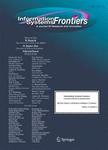版权所有:内蒙古大学图书馆 技术提供:维普资讯• 智图
内蒙古自治区呼和浩特市赛罕区大学西街235号 邮编: 010021

作者机构:Univ Gloucestershire Cyber & Appl Comp Pk Cheltenham GL50 2RH Gloucestershire England Univ Gloucestershire Games Technol Pk Cheltenham GL50 2RH Gloucestershire England Univ Bradford Fac Engn & Informat Comp Sci Richmond Rd Bradford BD7 1DP West Yorkshire England
出 版 物:《INFORMATION SYSTEMS FRONTIERS》 (信息系统前沿)
年 卷 期:2024年第26卷第4期
页 面:1279-1305页
核心收录:
学科分类:0711[理学-系统科学] 07[理学] 08[工学] 070105[理学-运筹学与控制论] 081101[工学-控制理论与控制工程] 0701[理学-数学] 071101[理学-系统理论] 0811[工学-控制科学与工程] 0812[工学-计算机科学与技术(可授工学、理学学位)]
主 题:Features extraction Deep learning High-level features Low-level features Optimal features fusion
摘 要:Features extraction has a fundamental value in enhancing the scalability and adaptability n of medical image processing framework. The outcome of this stage has a tremendous effect on the reliability of the medical application being developed, particularly disease classification and prediction. The challenging side of features extraction frameworks, in relation to medical images, is influenced by the anatomical and morphological structure of the image which requires a powerful extraction system that highlights high- and low- level features. The complementary of both feature types reinforces the medical image content-based retrieval and allows to access visible structures as well as an in-depth understanding of related deep hidden components. Several existing techniques have been used towards extracting high- and low-level features separately, including Deep Learning based approaches. However, the fusion of these features remains a challenging task. Towards tackling the drawback caused by the lack of features combination and enhancing the reliability of features extraction methods, this paper proposes a new hybrid features extraction framework that focuses on the fusion and optimal selection of high- and low-level features. The scalability and reliability of the proposed method is achieved by the automated adjustment of the final optimal features based on real-time scenarios resulting an accurate and efficient medical images disease classification. The proposed framework has been tested on two different datasets to include BraTS and Retinal sets achieving an accuracy rate of 97% and 98.9%, respectively.